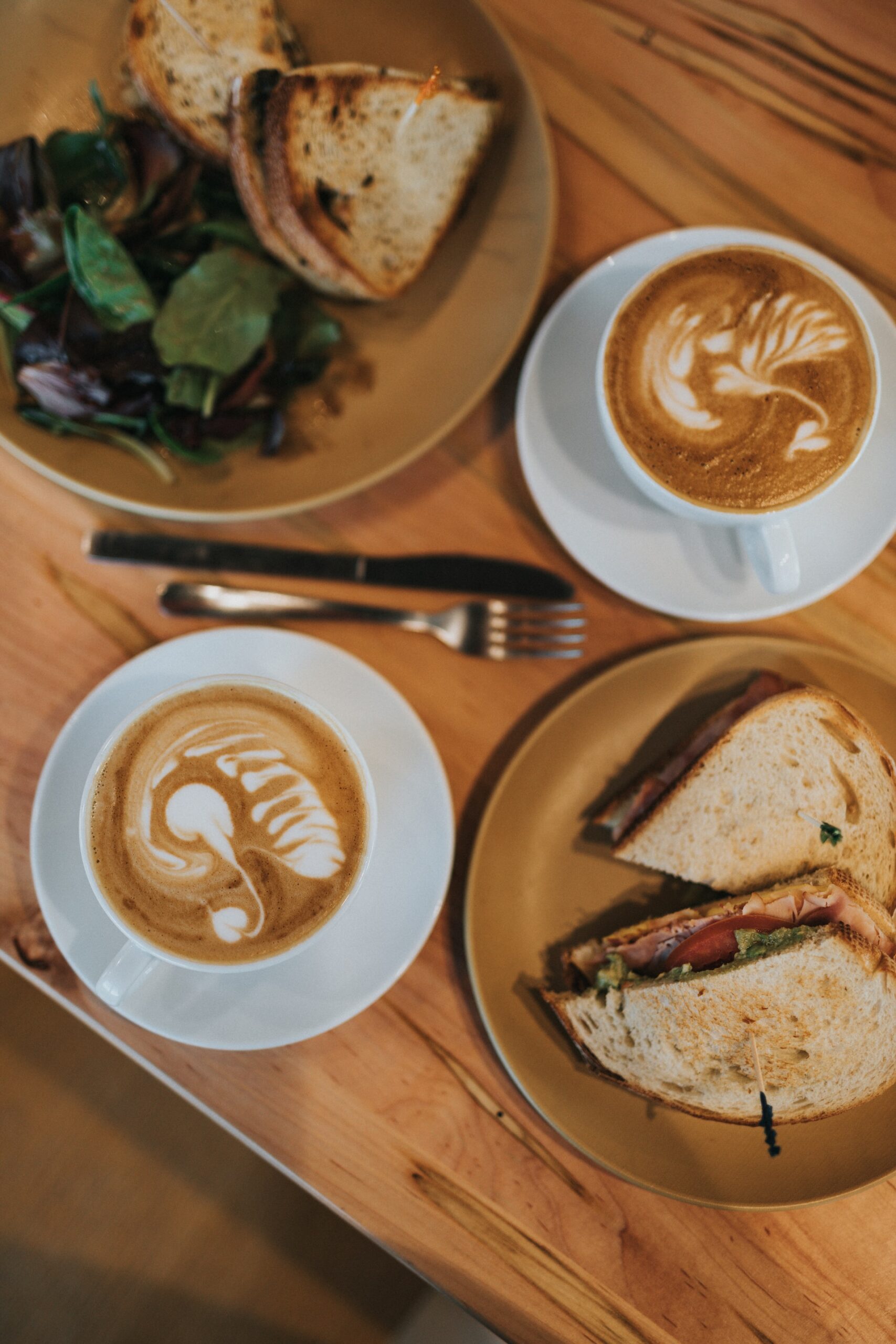This post may contains affiliate links which means I may receive a commission from purchases made through links. Learn more on my affiliate disclaimer.
Understanding the Basics of Coffee Pairing
Pairing coffee with other flavors can enhance your overall dining experience and bring out the best in both the coffee and the accompanying dish. When it comes to understanding the basics of coffee pairing, there are a few key factors to consider.
Firstly, it’s important to take into account the flavor profile of different coffees. Each type of coffee has its own unique characteristics, ranging from fruity and floral notes to earthy and nutty undertones. By understanding these flavor profiles, you can better match them with complementary flavors in food.
Secondly, consider balancing bitterness when pairing coffee with savory foods. Many savory dishes have their own inherent bitterness, such as roasted meats or dark leafy greens. Choosing a coffee that is slightly sweeter or has more acidity can help balance out these bitter flavors and create a harmonious taste experience.
Lastly, don’t be afraid to experiment with unconventional pairings. While there are traditional combinations that work well together, such as chocolate-based desserts with rich espresso shots, exploring unexpected pairings can lead to delightful surprises. For example, try pairing a light roast Ethiopian coffee with fresh seafood dishes for an unexpectedly refreshing combination.
By understanding the basics of coffee pairing – considering flavor profiles, balancing bitterness, and being open to experimentation – you can elevate your culinary experiences and discover new dimensions of taste. So next time you’re enjoying a cup of joe or planning a meal, take some time to think about how different coffees could enhance your dining adventure.
Exploring the Flavor Profiles of Different Coffees
When it comes to exploring the world of coffee, one of the most fascinating aspects is the diverse range of flavor profiles that different coffees offer. Each type of coffee bean has its own unique characteristics and taste notes, making for an exciting journey for coffee enthusiasts.
One popular type of coffee known for its distinct flavors is Ethiopian coffee. Ethiopian beans are often described as having a fruity and floral profile, with hints of berries, citrus, and jasmine. These bright and vibrant flavors make them a perfect choice for those who enjoy a lighter and more delicate cup of coffee.
On the other end of the spectrum, we have dark roast coffees such as Italian or French roast. These beans undergo a longer roasting process which results in a rich and bold flavor profile. Dark roast coffees often exhibit smoky and chocolatey notes, with a fuller body that can be enjoyed by those who prefer strong and robust flavors.
Another interesting category to explore is single-origin coffees. These are coffees sourced from specific regions or farms, allowing you to experience the unique terroir and processing methods that contribute to their flavor profiles. For example, Colombian coffee is known for its balanced acidity, medium body, and caramel-like sweetness.
In summary (without using ‘In conclusion’ or similar phrases), exploring different flavor profiles in coffee opens up a whole new world of taste experiences. From fruity Ethiopian beans to bold dark roasts or nuanced single-origin varieties like Colombian coffee – there’s something out there for every palate. So why not embark on your own journey through various coffees’ flavor profiles? You might just discover your new favorite brew along the way!
Enhancing Sweet Dishes with Coffee Pairings
When it comes to enhancing the flavors of sweet dishes, coffee pairings can be a game-changer. The rich and complex notes of different coffees can complement and elevate the taste of desserts, making them even more enjoyable. Whether you’re serving a classic chocolate cake or a fruity tart, there is a coffee out there that can enhance its sweetness.
One popular pairing is combining dark roast coffee with rich, chocolate-based desserts. The deep flavors of the coffee accentuate the richness of the chocolate, creating a harmonious balance between bitterness and sweetness. This combination works particularly well with flourless chocolate cakes or decadent brownies.
For lighter and fruitier desserts such as lemon bars or berry tarts, consider pairing them with a medium roast coffee. The bright acidity in these coffees cuts through the sweetness of the dessert, adding complexity to each bite. It’s like adding a refreshing twist to your palate while enjoying your favorite treat.
Incorporating coffee into sweet dishes not only adds depth but also creates an opportunity for experimentation and creativity in your culinary endeavors. By exploring different flavor profiles and finding unique combinations that work well together, you can take your sweet creations to new heights. So next time you’re baking up something delicious, don’t forget to consider how coffee could enhance its flavors – you might just discover an unforgettable pairing!
Balancing the Bitterness: Coffee Pairings for Savory Foods
When it comes to pairing coffee with savory foods, one key consideration is finding a balance between the bitterness of the coffee and the flavors of the dish. The right combination can enhance both elements, creating a harmonious dining experience.
One popular option for balancing bitterness is to pair dark roast coffees with rich and hearty dishes such as grilled meats or stews. The bold flavors of these coffees can stand up to the robust flavors in savory dishes, while their slight bitterness complements and cuts through fatty or heavy textures.
Another approach is to choose medium roast coffees that have more nuanced flavor profiles. These coffees often have hints of sweetness or acidity that can complement savory dishes without overpowering them. For example, a medium roast coffee with fruity notes could be paired with roasted vegetables or seafood dishes to add depth and complexity.
In summary, when pairing coffee with savory foods, it’s important to find a balance between the bitterness of the coffee and the flavors of the dish. Whether opting for a bold dark roast or a more subtle medium roast, choosing complementary flavors will elevate your dining experience by enhancing both elements.
- One option for balancing bitterness is to pair dark roast coffees with rich and hearty dishes like grilled meats or stews.
- The bold flavors of dark roast coffee can stand up to robust flavors in savory dishes.
- The slight bitterness of dark roast coffee complements and cuts through fatty or heavy textures in the dish.
- Another approach is to choose medium roast coffees with more nuanced flavor profiles.
- Medium roast coffees often have hints of sweetness or acidity that can complement savory dishes without overpowering them.
- For example, a medium roast coffee with fruity notes could be paired with roasted vegetables or seafood dishes to add depth and complexity.
Unlocking the Richness: Coffee Pairings for Chocolate-based Desserts
When it comes to indulging in chocolate-based desserts, finding the perfect coffee pairing can take your culinary experience to new heights. The rich and complex flavors of both coffee and chocolate complement each other beautifully, creating a harmonious combination that tantalizes the taste buds. Whether you’re enjoying a decadent chocolate cake or a velvety chocolate mousse, here are some coffee pairings that will unlock the richness of these delightful treats.
One classic pairing is an espresso shot or a strong black coffee with dark chocolate desserts. The bold and intense flavors of espresso help to cut through the sweetness of rich chocolates, providing a balanced and satisfying contrast. The bitterness of the coffee enhances the depth and complexity of dark chocolate, creating a truly divine flavor experience.
For those who prefer milk chocolates or lighter-flavored desserts like white chocolate cheesecake or milk chocolate truffles, consider pairing them with a medium-bodied coffee such as Colombian or Brazilian beans. These coffees have subtle fruity notes and hints of caramel that complement the creamy sweetness of milk chocolates without overpowering them. The result is a harmonious blend where neither the coffee nor the dessert overpowers each other but instead elevates their individual flavors.
Incorporating flavored coffees into your dessert pairings can also add an extra layer of complexity to your taste experience. For example, pairing hazelnut-flavored coffee with hazelnut-infused chocolates creates an exquisite symphony of nutty aromas and tastes. Similarly, combining vanilla-flavored coffee with white chocolate desserts adds another dimension to their already delicate flavors. Experimenting with different flavored coffees opens up endless possibilities for unique combinations that will surprise and delight your palate.
By carefully selecting complementary flavors between your chosen dessert and accompanying cuppa joe, you can unlock an unparalleled richness in both taste experiences. So next time you find yourself craving something sweet and chocolaty, don’t forget to explore the world of coffee pairings. Your taste buds will thank you for it!
Discovering Perfect Coffee Pairings for Breakfast
Coffee is a beloved morning beverage for many, and finding the perfect pairing for your breakfast can take your morning routine to the next level. When it comes to breakfast, there are several coffee pairings that can enhance the flavors of your meal and provide a delightful start to your day.
One classic combination is a strong cup of black coffee paired with a hearty bacon and egg sandwich. The boldness of the coffee complements the savory flavors of the bacon and eggs, creating a satisfying balance. If you prefer something sweeter in the morning, consider pairing a creamy latte with pancakes or waffles topped with fresh fruit. The smoothness of the latte pairs well with the sweetness of maple syrup and adds an extra layer of richness to your breakfast.
For those who enjoy lighter fare in the morning, try pairing a light roast coffee with yogurt and granola. The bright acidity of the coffee cuts through the creaminess of yogurt while enhancing its tangy flavor. Adding some crunchy granola provides texture and complements the subtle notes in the light roast.
Finding perfect coffee pairings for breakfast can elevate your mornings from ordinary to extraordinary. Whether you prefer bold flavors or lighter options, there’s a combination out there waiting to be discovered. So grab your favorite brew and explore new possibilities each morning as you savor both your delicious meal and perfectly paired cup of joe
Exploring Unconventional Coffee Pairings for Snacks
When it comes to pairing coffee with snacks, most people tend to stick to the classics like cookies or pastries. However, if you’re feeling adventurous and want to try something new, there are plenty of unconventional coffee pairings that can take your snacking experience to the next level.
One unexpected but delightful combination is pairing a strong black coffee with spicy snacks. The boldness of the coffee helps balance out the heat from spicy treats like jalapeno chips or buffalo wings. The contrasting flavors create a unique taste sensation that will leave your taste buds tingling.
If you have a sweet tooth, consider trying a medium roast coffee with salty snacks. The caramel notes in the coffee complement the saltiness of pretzels or popcorn perfectly. This unusual combination creates an interesting contrast between savory and sweet, making each bite even more enjoyable.
For those who prefer healthier options, try pairing a light roast coffee with fresh fruit slices or vegetable sticks. The bright acidity of the coffee enhances the natural flavors of fruits and vegetables without overpowering them. It’s a refreshing and nutritious snack option that still provides that much-needed caffeine boost.
So why limit yourself to traditional snack choices when there are so many exciting possibilities? Step outside your comfort zone and explore these unconventional coffee pairings for snacks – you might just discover your new favorite combination!
Coffee Pairings for Light and Fresh Salads
Pairing coffee with light and fresh salads can add a unique twist to your meal. The delicate flavors of the salad ingredients can be complemented by the right choice of coffee, enhancing your dining experience. When selecting a coffee to pair with a light and fresh salad, consider the acidity and brightness of the beans.
Opt for a bright and citrusy coffee to match the crispness of the salad greens. A light roast Ethiopian coffee or a Kenyan AA blend can provide fruity notes that harmonize well with leafy greens like arugula or spinach. The acidity in these coffees helps cleanse your palate between bites, making each taste more vibrant.
For salads featuring fruits such as strawberries or oranges, opt for a medium-bodied Colombian or Costa Rican coffee. These coffees often have hints of caramel and nutty flavors that complement the sweetness of fruits without overpowering them. The smoothness of these blends creates balance when paired with lighter fruit-based dressings.
If you prefer savory salads with ingredients like roasted vegetables or grilled chicken, choose a darker roast such as an Italian espresso blend. The boldness and smoky undertones in these coffees create depth when combined with heartier flavors. Their robust nature enhances the umami taste profile found in many savory dishes.
Remember that personal preference plays an important role in finding the perfect coffee pairing for your light and fresh salad. Experimentation is key – try different combinations until you find one that pleases your palate!
Elevating the Dining Experience: Coffee Pairings for Gourmet Meals
Pairing coffee with gourmet meals can elevate the dining experience to a whole new level. The rich and complex flavors of gourmet dishes can be enhanced by carefully selecting the right coffee to complement them. When it comes to pairing coffee with gourmet meals, it’s important to consider the intensity and flavor profile of both the food and the coffee.
For bold and hearty dishes like steak or game meats, a dark roast coffee with notes of chocolate or caramel can provide a robust and earthy companion. The deep flavors of the coffee can help balance out the richness of these dishes, creating a harmonious combination that tantalizes the taste buds.
On the other hand, for delicate seafood or vegetable-based gourmet meals, a light roast coffee with floral or fruity undertones may be more suitable. This type of coffee won’t overpower the subtle flavors of these dishes but will instead add an extra layer of complexity that enhances their overall taste.
When choosing your gourmet meal and coffee pairing, don’t forget about texture as well. A creamy dessert like crème brûlée pairs beautifully with a smooth and velvety espresso, while a crisp fruit tart may benefit from a bright and acidic pour-over brew.
In conclusion (oops!), finding the perfect coffee pairing for your gourmet meal requires careful consideration of both flavor profiles and textures. Experimentation is key in discovering unique combinations that enhance each component’s characteristics rather than overpowering them. So next time you’re planning an exquisite dining experience, don’t forget to take your cuppa joe into account!
Tips and Tricks for Successful Coffee Pairings
1. Experiment with Different Roasts: When it comes to coffee pairings, the roast level of your coffee can greatly impact the overall flavor profile. Lighter roasts tend to have brighter and more acidic flavors, while darker roasts are richer and more robust. Take the time to try different roasts with various dishes to find the perfect pairing that complements both the food and the coffee.
2. Consider Flavor Profiles: Just like wine, coffee has its own unique flavor profiles that can enhance or contrast with different foods. For example, a fruity Ethiopian coffee might pair well with a citrusy dessert, while a nutty Brazilian coffee could complement a savory dish like grilled chicken or roasted vegetables. Pay attention to the tasting notes of your chosen coffees and consider how they will interact with the flavors in your meal.
3. Don’t Forget About Texture: While we often focus on taste when it comes to food pairing, texture plays an important role as well. Think about how different brewing methods affect the mouthfeel of your coffee – whether it’s smooth and velvety or bold and intense – and how that will work alongside textures in your dishes. A creamy cappuccino might be ideal for pairing with a rich chocolate cake, while a crisp pour-over could balance out lighter salads.
By following these tips and tricks for successful coffee pairings, you can elevate your dining experience by creating harmonious combinations of flavors between your favorite brews and meals without relying on conjunctive adverbs or summary phrases at any point within these three paragraphs
Frequently Asked Questions (FAQ’s)
What is coffee pairing?
Coffee pairing is the art of combining different types of coffee with various food items to enhance the flavors of both.
Why should I pair coffee with food?
Pairing coffee with food can create a harmonious balance of flavors, as the taste of coffee can complement or contrast with different dishes, enhancing the overall dining experience.
How do I understand the basics of coffee pairing?
Understanding the basics of coffee pairing involves learning about the different flavor profiles of coffee and how they interact with different types of food.
Can you provide examples of different flavor profiles of coffee?
Yes, some examples include fruity, nutty, chocolatey, floral, earthy, and spicy flavor profiles.
How do I enhance sweet dishes with coffee pairings?
Pairing coffee with sweet dishes can be achieved by matching flavors or creating contrasts. For example, a fruity coffee can be paired with a berry tart, while a rich chocolatey coffee can complement a chocolate cake.
How can I balance the bitterness of coffee with savory foods?
Balancing the bitterness of coffee with savory foods can be done by pairing it with dishes that have a natural sweetness or adding ingredients that have a contrasting flavor, such as cream or cheese.
What are some coffee pairings for chocolate-based desserts?
Coffee pairings for chocolate-based desserts can include a dark roast coffee with a rich chocolate cake, or a medium roast coffee with a creamy chocolate mousse.
What are some perfect coffee pairings for breakfast?
For breakfast, you can pair a light roast coffee with a fruity granola parfait or a medium roast coffee with a buttery croissant.
Are there any unconventional coffee pairings for snacks?
Yes, some unconventional coffee pairings for snacks can include a citrusy coffee with spicy popcorn or a nutty coffee with a savory cheese and cracker platter.
Can coffee be paired with light and fresh salads?
Yes, coffee pairings for light and fresh salads can include a light roast coffee with a citrusy salad or a floral coffee with a herb-infused salad.
How can I elevate the dining experience with coffee pairings for gourmet meals?
To elevate the dining experience, you can choose specialty coffees that complement the flavors of the gourmet meal, such as a bold coffee with a juicy steak or a delicate coffee with a seafood dish.
Do you have any tips and tricks for successful coffee pairings?
Yes, some tips and tricks include experimenting with different coffee and food combinations, considering the intensity of flavors, and seeking recommendations from coffee experts or baristas.
Conclusion
In summary, exploring the world of coffee pairing is a journey that can take your culinary experiences to new heights. Understanding the diverse flavor profiles of coffee, from fruity Ethiopian beans to robust dark roasts, allows you to unlock a realm of taste possibilities. Whether you’re enhancing sweet desserts, balancing bitterness with savory dishes, or venturing into unconventional pairings for snacks, there’s a coffee out there waiting to complement your palate.
For breakfast, coffee pairings can kickstart your day with delightful combinations, from hearty bacon and eggs with a strong black coffee to the sweetness of pancakes and lattes. Even light and fresh salads can benefit from carefully selected coffee choices that match the acidity and brightness of the ingredients.
When it comes to gourmet meals, pairing coffee requires a keen consideration of intensity, flavor profiles, and textures. Dark roasts may elevate bold and hearty dishes, while lighter roasts harmonize with delicate seafood or vegetable-based creations. Don’t forget to experiment and discover unique combinations that enhance both your coffee and your meal.
Finally, successful coffee pairings involve experimenting with different roasts, considering flavor profiles, and paying attention to texture. By doing so, you can create harmonious flavor symphonies that elevate your dining experience, all without relying on the clichéd “in conclusion” or summary phrases. So, let your taste buds be your guide as you embark on your own coffee pairing adventure, and savor the delightful surprises that await you. Happy coffee pairing!





